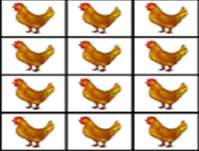The 9 block grid is Jack Welch’s famous method for evaluating staff. There are two criteria : Potential and Performance. Those who excel at both are in the top right hand corner. Those who fail at both are in the bottom left hand. If you’re one of the three best blocks then you will be prepared for greater things and new roles. If you’re in the bottom three then you’re on your way to intense training, or you’re on your way out the door.
It’s a widespread and revered way of assessing staff.
I’m uncomfortable with it.
One reason that I have been long uncomfortable with it is that it’s a natural and common tendency to rate people who are like you. It is a rare boss that promotes people who are really different from him. (Rare but not unknown, of course). We all have some narcissistic leanings, perhaps more so in our trade. We naturally tend to reward and admire people that remind us a little bit of ourselves and this can lead to a lack of diversity in the workplace, which can hamper change and growth. In “Weird ideas that work” Robert Sutton advocates hiring and promoting people you don’t like. For obvious reason this remains an experimental activity for most organisations.
I now have a second reason to be wary of the 9 block system. It is to do with chickens, and it is the basis of an interesting experiment in animal breeding by William Muir of Purdue University, recorded by David Sloan Wilson. Muir bred chickens, with the objective of improving egg laying, in two ways. The first involved selecting the most productive hens to breed from. The second involved selecting the most productive cages of hens and breeding from those. The results were surprising. The first method actually caused egg production to decline after a few generations, even though the best egg layers were selected. The second resulted in 160% improvement in egg laying, despite the individuals within the teams of hens not all being that productive.
Now clearly employees aren’t laying eggs. But if we want teams of people who can work well together and partner with clients and with media owners and content creators to produce brilliant work then we must question whether the 9 block system is the best way to select our future stars.
